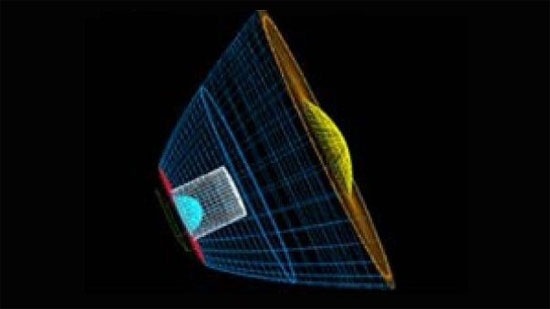New street lamp design helps reduce light pollution
For astronomers, a city that is brightly lit, it is not a place to study the sky. Not only that, light pollution also affects nature such as bird migration, sea turtle hatching , wildlife mating and daily eating.
Researchers at the Universities of National Central University (Taiwan) and the Unidad Academica de Fisica, along with the Universidad Autonoma de Zacatecas (Mexico) have found a solution to this problem with specially designed LED street lamps. lighting where needed, not allowing light to penetrate undesirable areas, reducing light pollution.

Current street lights are usually high pressure lamps or mercury lamps. These lamps can light the light in unwanted directions, resulting in bright, uneven light, light reflected above, and wasted energy. In some cases, nearly half of the energy is lost due to horizontal and vertical light bulbs and common street lights are having problems adapting to different lighting arrangements, even if placed in the middle of the road, on the road or in zigzag shape.
The team has developed a new LED street light design with a 3-part lighting mechanism with the first part being a high-performance LED cluster. These balls use TIR lenses (Total Internal Reflection), focusing light in parallel rays. The LED lights that are mounted inside a reflector make the light undisturbed, and when emitted, the light passes through a light sink to reduce the phenomenon. According to the research team, this design allows the lamp to emit rectangular lights on the area to be lit.

LED street lights have been studied in a simulated environment to determine the amount of light emitted at a distance of about 10m from the light source. The amount of light is measured by the useful optical coefficient (Optical Utilization Factor - OUF), which describes the relationship between the target light rate and the amount of light emitted directly from the LED bulbs. OUF indicator is directly proportional to the performance of the light bulb.
Tests show that the OUF index of LED street light design is from 51 to 81%, while a good conventional street lamp is only 45% efficient. LED street lights only lose 2% of the light in the direction of polluting the ambient light and reducing power consumption by 40% - 60%. The team also said that this new LED street lamp is easy to make because it has only 4 parts, with LED technology already available.
The team plans to produce the prototype version in the next 3 to 6 months and will install the actual test system as early as next year.
- What is light pollution? How to reduce light pollution
- Light pollution destroys astronomers' vision
- Street light turns on as the vehicle approaches
- Video: The world alerted to light pollution
- Intelligent street lighting adjusts lighting
- Moon polishing project
- Myopia: The culprit due to light pollution
- Light pollution - silently threat
- Light pollution can cause spring to arrive 1 week early
- Too bright street lights increase crime
- New light bulbs save up to 80% electricity compared to LED lights, whichever is plugged into
- 10 samples of artificial plants reduce city pollution in the future
 Is the magnetic North Pole shift dangerous to humanity?
Is the magnetic North Pole shift dangerous to humanity? Washington legalizes the recycling of human bodies into fertilizer
Washington legalizes the recycling of human bodies into fertilizer Lightning stone - the mysterious guest
Lightning stone - the mysterious guest Stunned by the mysterious sunset, strange appearance
Stunned by the mysterious sunset, strange appearance